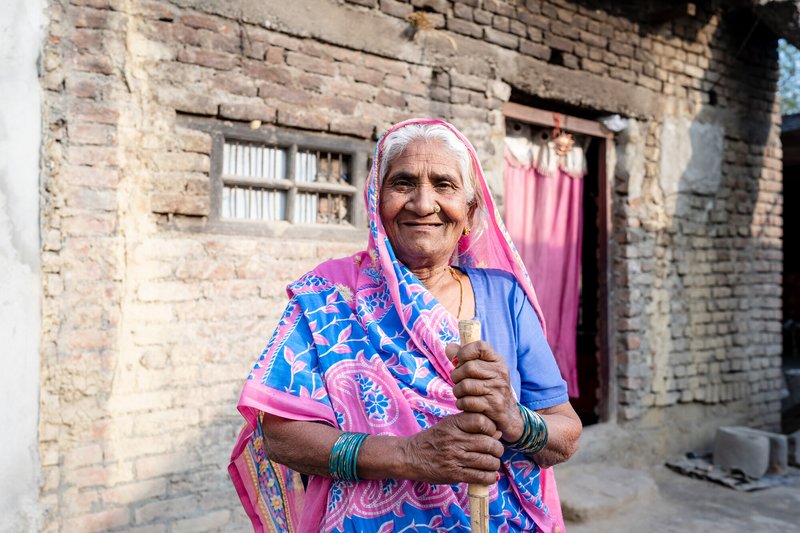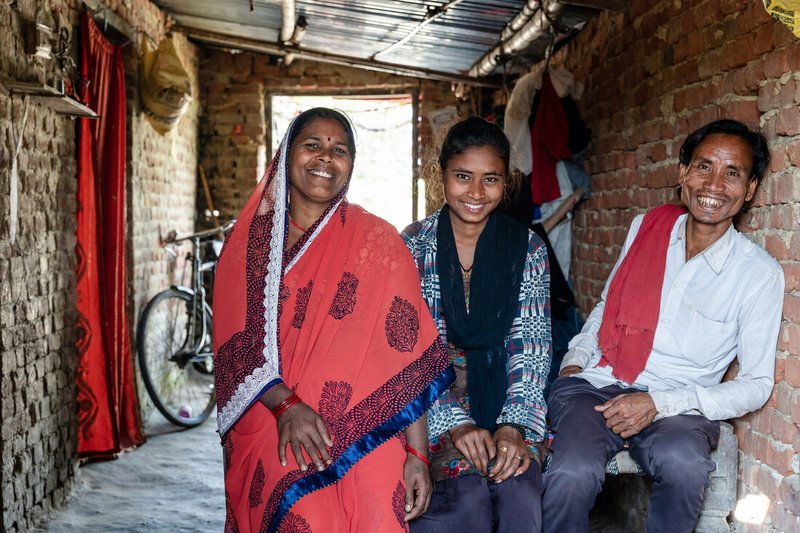Huge strides made in the fight to end leprosy in Nepal
Nobody could have predicted the impact our Heal Nepal campaign would have back in 2019. It is even more remarkable that the fight to end leprosy was so accelerated during a global pandemic. Today, we're so thankful that huge strides have been made in the fight to end leprosy in Nepal.

The Heal Nepal campaign raised £4.15 million, including £2 million from the UK government, to find new leprosy cases hidden away in remote areas of the country. As a result of the outreach, a total of 1,997 people have been found and cured of leprosy. Many, like Dhanmati (pictured above), were spared disability as their leprosy was treated at an early stage. New leprosy patients needing further treatment were taken to Anandaban Hospital. There many underwent reconstructive surgery to restore movement to their hands and feet.
A legacy that will continue for years to come
Although the three-year Heal Nepal project has now ended, its legacy will continue for years to come. Hundreds of government health workers are now able to detect the early signs of leprosy. This input into the health system will have a lasting effect.
Hundreds of female volunteer health workers have also received leprosy training. As well as being able to recognise signs of the disease, they are challenging prejudice. These women are at the very heart of community life. This makes them well placed to change people's attitudes. A largescale media campaign has reinforced this work. Almost three million people heard, via the radio and text messages, that leprosy is curable and not a curse to be feared.
The Heal Nepal teams have also undertaken contact tracing. They traced a staggering 74,822 close contacts to people diagnosed with leprosy. Each contact was taught to recognise the early signs of leprosy. They were also prescribed post-exposure drugs, reducing their likelihood of contracting the disease.
The success of Heal Nepal also equipped the team for unprecedented times. Covid hit Nepal hard. The money raised enabled Anandaban Hospital to become a designated Covid vaccination centre. On the day the vaccine roll-out began in Nepal, the team vaccinated 169 frontline health workers. Over the coming months, a total of 2,500 people received their Covid vaccines. This was either at Anandaban or via outreach work in the Kathmandu Valley.
Improved healthcare for all
And there is even more happy news to benefit the whole community surrounding Anandaban Hospital as a result of Heal Nepal: a new trauma and emergency centre has opened at Anandaban. The state-of-the-art facility will house A&E and paediatric departments, and a new maternity centre and a critical care unit will open in the coming months. This will give people across the Kathmandu Valley the healthcare we in the UK so often take for granted. Mothers will be able to give birth safely, protecting their own lives and those of their babies. Countless lives will be saved at the new A&E department, which will be the only facility of its kind in this vast area.

People affected by leprosy will always be at the very heart of The Leprosy Mission's work, yet it is exciting to offer healthcare to the wider community. Non-leprosy patients who pay for treatment will help to make Anandaban Hospital more self-sustaining.
The need for the trauma and emergency centre arose following the devastating earthquakes in Nepal in 2015. More than 9,000 people were killed and hundreds of villages were decimated. Many of the buildings on the Anandaban site were severely damaged. When it came to repairing the earthquake damage at Anandaban, the team began to think big. London-based architectural charity Article 25 helped with designs for a brand-new, earthquake-resistant trauma and emergency centre.
The public's amazing response to Heal Nepal saw ambitious plans become a reality. The team had achieved its aim of finding and curing thousands of people of leprosy. And so in turn, we were able to turn its attention to building a hospital fit for the future.
Chief Executive Peter Waddup said: "Heal Nepal was our largest fundraising campaign to date back in 2019. I am simply staggered by what has been achieved as a result of this incredible campaign, and it has left an amazing legacy accelerating the race to end leprosy in Nepal. I would like to thank from the bottom of my heart the generosity of everyone who has made this lifechanging work possible.”
Photos: Robic Upadhyay